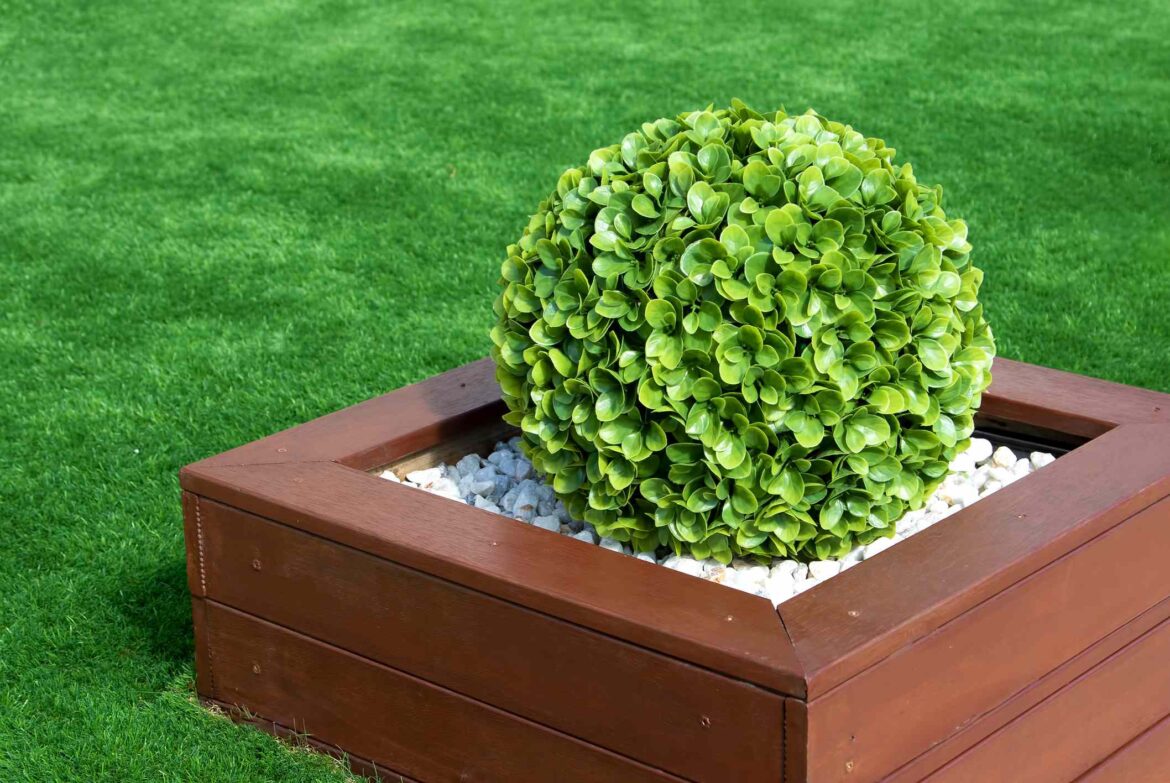Key Points
Faux plants might be a good choice for locations with tough growing conditions, but they fade fast.Mixing faux and real plants in a landscape can cause drainage and light issues.Faux plants work best in containers or used exclusively in areas without real plants.
Artificial plants, also called faux plants, usually get a bad rap. However, there are settings and situations in which using them outdoors makes sense. Read on to find out how an expert is using faux plants to green up her yard.
You’ll also learn where faux plants aren’t good choices and how to use them so they don’t affect the health of your other, real plants.
Meet the Expert
Aaron Steil is a consumer horticulture extension specialist at the Department of Agriculture of Iowa State University.
Julia Marcum is the home designer behind Chris Loves Julia, based in North Carolina.
Can You Plant Faux Plants?
While it is possible to use faux plants in outdoor spaces, not all fake plants are suitable to withstand the elements.
“Most fake plants are not intended for outdoor use” says Aaron Steil, a consumer horticulture extension specialist at Iowa State University. “They fade very quickly in the sun and look terrible sometimes after only a few short weeks outside.”
If you decide to use faux plants, make sure they are labeled as outdoor-safe and made of UV-resistant and weatherproof materials, such as polyethylene (PE), polyblend plastics, or PVC.
Additionally, there are environmental concerns.
“Even under the best of conditions, faux plants won’t last forever and will eventually need to be tossed in the garbage, where the plastic they are made from will last forever in a landfill,” says Steil.
He also mentions that they’re not even a good cost-saving technique, as fake plants often cost more than their real alternatives.
Want more gardening tips? Sign up for our free gardening newsletter for our best growing tips, troubleshooting hacks, and more!
Why Choose Faux Plants
Credit:
Sutidas / Getty Images
Julia Marcum, the designer behind Chris Loves Julia, decided to use faux plants in a shaded, paved area adjacent to her house. The conditions were difficult for growing real plants, so she planted faux plants in containers with real soil.
“The containers have been out there for years, and they are still evergreen. No pests, frost, fertilization, or sun damage to deal with,” she says.
Faux plants may also be an alternative if you want plants that are finicky and prone to disease, such as boxwoods. And unlike real plants, you don’t need to worry about growing conditions and can freely combine species that might otherwise not coexist well.
“I like to mix different heights and textures,” says Julia Marcum.
In her backyard, she combined a pond cypress topiary, a plum pine double-ball topiary, a 5-foot-tall cedar pine tree, and boxwood greenery balls.
When You Shouldn’t Plant Faux Plants
Faux plants do not absorb water from the soil, which can lead to runoff and flooding after rain or snow. They can also deprive other plants of light because their faux foliage is stagnant and the same year-round, unlike deciduous trees and shrubs.
Another drawback of faux plants, according to Steil, is that they can be difficult to keep firmly in place.
“This means wind and rain can easily dislodge or blow them away,” he says.
Take this into consideration when placing faux plants and avoid locations where soil drainage is poor and natural vegetation would suffer from faux plants blocking the light. There is a good reason why faux plants are mostly used for containers, because potting them avoids these pitfalls.
Placed on a patio, entrance steps, or other paved areas around your home, they usually won’t interfere with the growth of real plants.
How to Make Faux and Real Plants Coexist
Credit:
Jamaludin Yusup / Getty Images
Ensuring that faux plants and real plants live a happy coexistence can be tricky, especially if you mix a lot of fake plants into your landscape, because faux plants affect soil drainage and light conditions.
Faux plants might require adjusting your watering habits, as they don’t absorb water. You want to make sure you don’t overwater your real plants.
Instead of trying to make faux and real plants coexist, it is often a better idea to choose one or the other. Marcum put artificial grass turf between the bluestone pavers on her backyard patio.
“The sun would just scorch any fescue grass between that stone, especially in the hot summers. However, we really wanted to bring some greenery close to the house.”
She says it is truly incredible how far artificial turf has advanced in terms of realistic effect.
“We selected grass that has the texture and color to match our real fescue that’s recessed farther into the backyard. With the artificial turf, we don’t have to worry about weeding, watering, or any kind of care. It’s incredibly durable underfoot and doesn’t fade over time since it has UV resistance,” Marcum says.


Comments are closed.